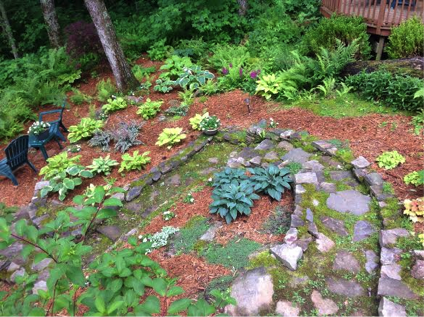
Principle: Grow enough food to feed everyone at site
A garden is a space reserved for the cultivation and enjoyment of plants. Gardens provide food for people and food for the soil, nutrition, nourishment, awareness, education and fun. While many gardens grow ornamental plants, permaculture gardens focus on growing edible crops.
There are many aspects to consider when designing and planting a garden. This includes the location, shape, bed, soil and structures. Then once you plant your garden, companion planting and crop rotation are useful information to grow a large harvest.
Garden site location
Consider these aspects when designing and planting a garden space:
- Natural conditions – Consider the wind, aspect, climate, edges, slope, sun, soil conditions
- Access to water – Water points, grey water pond runoff, wicking beds. Note: Gardens with good, healthy soil need to be watered less. Sometimes 1-2 times a week versus 2-4 times a day ( Symphony of the Soil).
- Access/pathways – Think about how you will physically harvest food
- Garden elements – Consider the garden’s proximity to the nursery, greenhouse, tool shed, animal structures and compost pile
Ollas are clay pots, fired or sun-baked, used to store water and keep soil moist for a long period of time. The water slowly wicks out of the pot over several days. This conserves water and keep the soil damp.
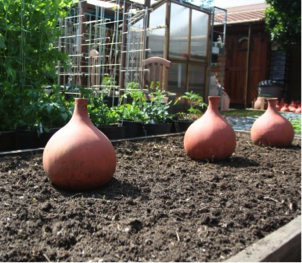
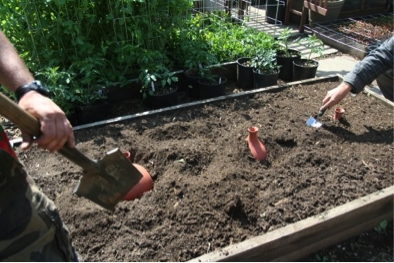
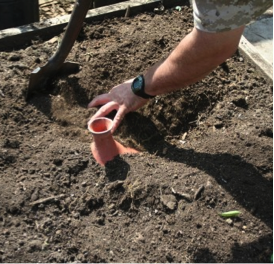
Garden shape
Once you choose a location to plant your garden, now you can decide what shape you want your garden. Here are a few ideas:
- Keyhole garden – A keyhole garden is built in the shape of a circle measuring about 1.5m in diameter. The garden stands waist-high and has a hole in the center for compost that moistens and nourishes the soil. (http://www.texascooppower.com/texas-stories/nature-outdoors/keyhole-gardening/). You can include several “keyholes” in the shape of a mandala.
- Square Foot Gardening – This technique divides a raised grow bed into square foot sections and makes it easy to keep track of what you planted. Designed by engineer Mel Bartholomews, SF gardening makes it easy to keep track of what you are growing and have a simple crop rotation and higher output with the efficiency. Ref: All New Square Foot Gardening.
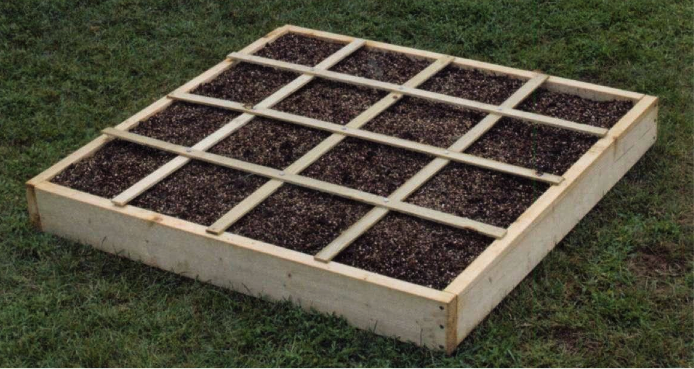
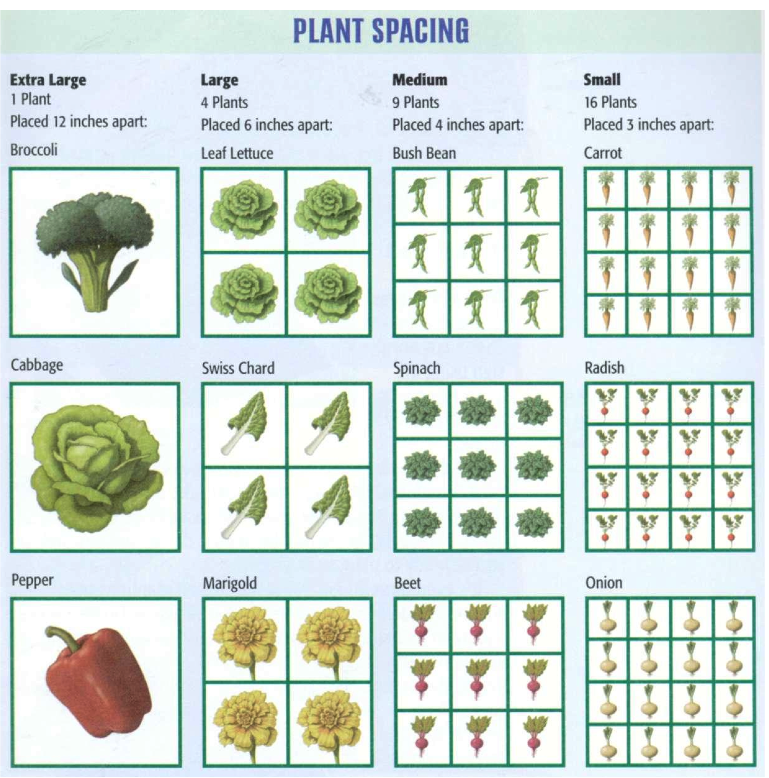
- Herb Spiral – An herb spiral garden is for growing edible and medicinal herbs. A good dimension for this type of garden is about 1 cubic meter, but it can be any size. The height creates small microclimates. These microclimates allow different herbs to grow. To build: Stack rocks in the shape of a spiral, starting in the middle and going down. Then fill all of the gaps with organic materials. You can plant your herb guild as follows:
- Starting at the center, at the highest point, plant rosemary then spiraling downward plant dill, oregano, thyme, chamomile, Echinacea, sage, yarrow, fennel, chives, parsley, coriander, calendula and feverfew
Making a garden bed
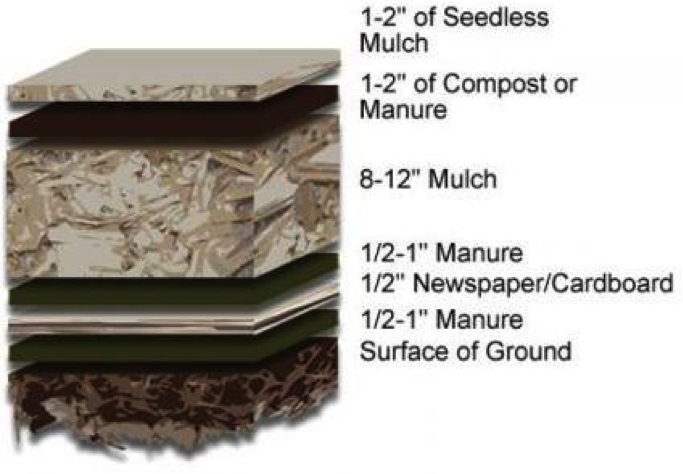
Here are a few types of garden beds:
- Raised bed – Use rocks, glass bottles, bamboo, straw or other material to create a small rise (about 15cm). Fill the space with soil. This is a good technique for making a garden if the topsoil is hard. Let the roots break the soil.
- Prepare and level the ground. Clear or chip the ground with a hoe to flatten the space. Plow, if you want. Add compost and fertilizer to the soil as you break it up to enrich the soil. Note: Plowing does disrupt the ecosystem of the topsoil. Some people prefer to sheet mulch on top of the soil and allow the roots to naturally penetrate the hardpan layer.
- Sheet mulching – Find whatever organic material you can find and layer it like compost: brown, green, high nitrogen – on top of the soil. 10-30 cm high. Sheet mulching is also called lasagna gardening or composting-in-place. Over time, the layers break down into soil. You can do this right where you want you plant your garden.
- Hugelkulture – Large raised bed created by large (up to 1m) long-term compost pile beds (also known as Hugelkulture, using wood thicker than your finger).
- Sunken bed – Good for water retention in arid/desert climates.
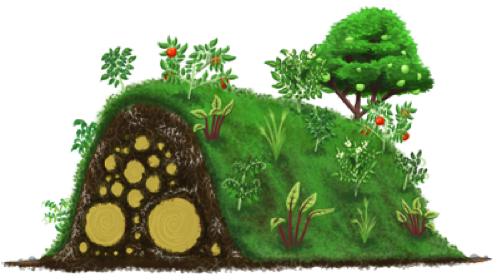
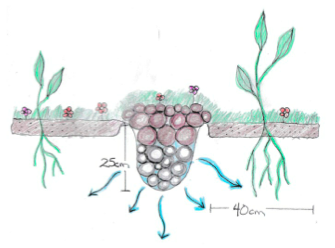
Garden structures / vertical gardening
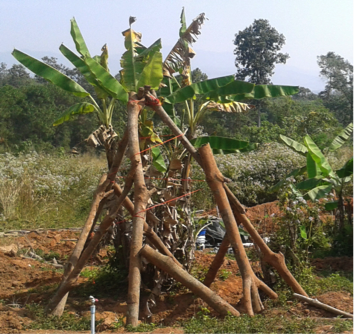
Ideal for the urban gardener. There are many techniques you could utilize to grow food indoors.
- A-frames or teepees – These are simple structures to allow vine plants to grow upwards. As the plants grow they create shade. Shade is helpful for growing other plants.
- Arch, wooden or woven wire trellis – Arches are good for building over small streams or for pathways. They provide shade for plants growing next to water.
- Tire stack – To grow potatoes in tires, start with one tire. Fill with soil. Plant 3 or more potatoes. When those sprout and send runners above the soil, add another tire on top, fill it with soil and add more potatoes. Repeat for 6-8 tires, up to 1.5m. Continue watering, when ready, knock off tire by tire and harvest.
- Indoor examples – Window boxes, plastic bottles, vinyl sheet with pockets, hangers, hanging planters, railing planters, container gardening. Once you’ve prepared the soil, you’re ready to plant your garden:
Companion planting
A good plant guild strengthens each of the plants in the guild by providing nutrients, regulating temperature and water absorption rate. A good rule of thumb when deciding on which plants to grow together is if they taste good together, they grow well together. Here are a few annual crops that grow well together:
- Pumpkin, corn and beans (Three sisters guild)
- Tomato, garlic and basil (Pizza guild)
- Sweet potato and taro (For rocky soil)
- Cucumber, beans, peas
- Carrot, onion, cabbage, lettuce
- Chiles, sweet pepper, tomato
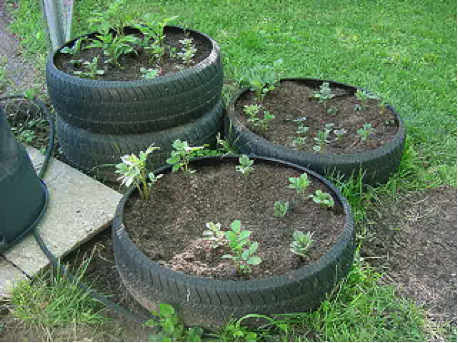
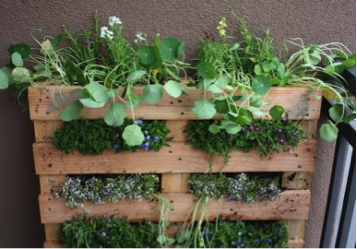
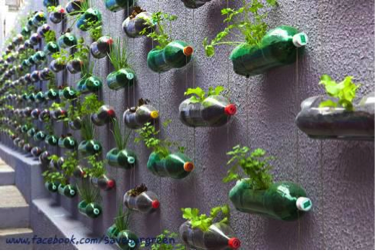
Annual versus perennial
Annual – Completes life cycle in one growing season, needs to be planted at the beginning of each growing season. Life cycle of an annual plant: Plant the seed, plant grows, flowers, sets seed and dies. Examples – corn, wheat, rice, lettuce, peas, watermelon.
Perennial – Lives for more than 2 growing seasons. Examples – squashes, broccoli, taro, potato, leek, strawberry.
Bi-annual – Takes two years to complete its biological lifecycle. In the first year the plant grows leaves, stems and roots. In the second year, the stem of the plant elongates or “bolts”. The plant then flowers, producing fruits and seeds before it finally dies.
Garden succession
One trick to grow an even harvest of crops is to stagger the timing of when you plant them. For example, plant a few seeds of one crop one day, then two weeks later plant a few more seeds of the same crop. Keeping a chart helps of what you planted when helps to stay organized. This way you don’t get a huge harvest all at once.
Crop rotation
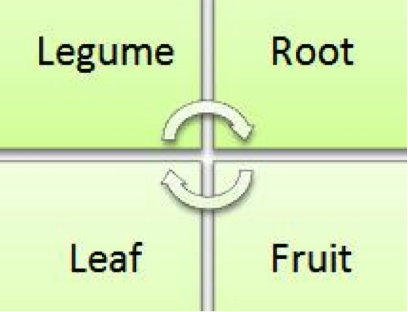
Crop rotation is a method of growing a series of different types of crops in the same area in sequential session. This helps to balance soil fertility and prevent diseases and pests. The sequence is logical – legume, leaf, root, fruit – Legumes add nutrients to the soil. Leaf crops consume some nutrients, root crops consume a medium amount of nutrients and then fruiting crops consume many nutrients. In which case, the next thing to plant is legumes and add nutrients back into the soil. Here are some examples of each type of crop:
Legumes – Nitrogen fixers
Peas, beans, lentils
Leaf – Light feeders
Lettuces (leeks, kale, bok choy, spinach, chard)
Herbs (dill, fennel, basil, parsley)
Brassicas (cabbages, mustard, turnips, cauliflower, broccoli, brussel sprouts), chives, celery
Root crop – Moderate feeders
Carrot, potato, onion, garlic, radishes, turmeric, beetroot, sweet potato, taro
Fruiting crop – Heavy feeder
Tomato, strawberry, peppers, cucumbers, pumpkins, squash, corn, eggplant